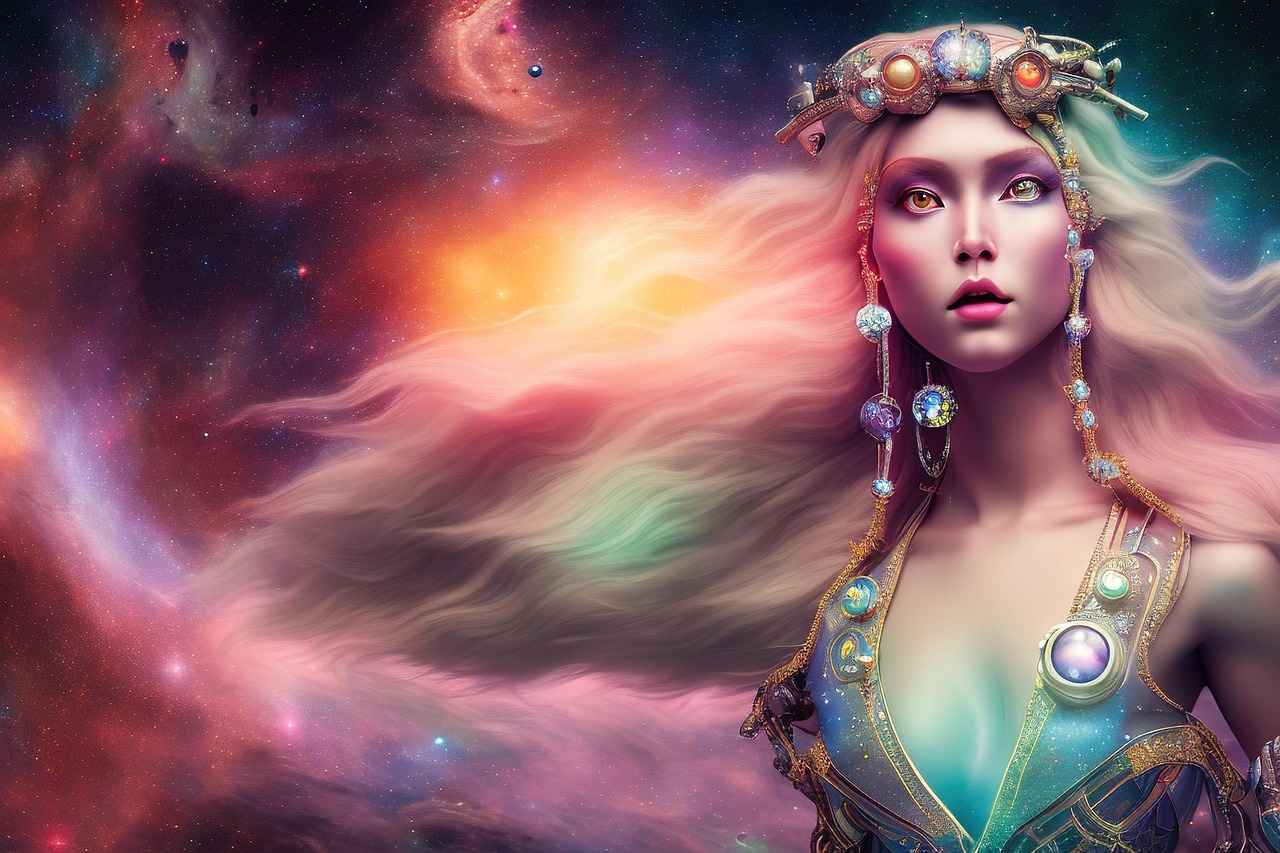This article serves as a comprehensive guide for both fans and newcomers seeking to navigate the intricate timeline of the Fate series. With numerous adaptations and spin-offs, understanding how to watch the series in chronological order can be quite challenging.
Understanding the Fate Series Timeline
The Fate series features a complex narrative that unfolds across various timelines and universes. At its core, it revolves around the Holy Grail War, where powerful mages summon legendary heroes to compete for the ultimate prize. Each adaptation brings its own perspective, enriching the overarching lore.
Fate/Stay Night: The Original Series
For many fans, Fate/Stay Night is the entry point into the franchise. This series introduces key characters such as Shirou Emiya and Saber, setting the stage for the conflicts that define the Fate universe.
Fate/Stay Night: Unlimited Blade Works
This adaptation offers a fresh take on the original story, focusing on different character arcs and themes. The animation quality is exceptional, showcasing a unique art style that enhances the narrative experience.
Fate/Zero: The Prequel
As a prequel to Fate/Stay Night, Fate/Zero delves into the events leading up to the Holy Grail War, providing vital context and depth to the characters and their motivations.
Fate/Grand Order: The Mobile Game Adaptation
Fate/Grand Order has gained immense popularity, featuring various story arcs that connect to the larger Fate universe. New players can find it overwhelming, but understanding the key arcs can enhance their gameplay experience.
Spin-offs and Alternate Universes
The Fate series also includes numerous spin-offs like Fate/Apocrypha and Fate/Extra, each offering unique narratives and gameplay mechanics that appeal to different audiences.
Final Thoughts on Watching the Fate Series
In conclusion, the Fate series presents a rich tapestry of stories and characters. By following this guide, viewers can explore the series in a way that resonates with them, ensuring a fulfilling experience within this captivating universe.

Understanding the Fate Series Timeline
The Fate series is a complex and intricate universe that spans multiple timelines, dimensions, and adaptations. Understanding its timeline is essential for anyone looking to delve into the rich lore and narratives that define this beloved franchise. This section provides a comprehensive overview of the foundational lore and how various series intertwine within the overarching narrative.
At its core, the Fate series revolves around the concept of the Holy Grail War, a battle royale among powerful mages and their summoned heroic spirits, known as Servants. Each iteration of the series explores different aspects of this conflict, often presenting unique interpretations of the same characters and events.
| Series Title | Timeline Position | Key Features |
|---|---|---|
| Fate/Stay Night | Original Timeline | Introduces the Holy Grail War and key characters. |
| Fate/Zero | Prequel | Explores the events leading up to Fate/Stay Night. |
| Fate/Grand Order | Alternate Timeline | Features various historical figures and timelines. |
| Fate/Apocrypha | Alternate Universe | Introduces a parallel Holy Grail War. |
| Fate/Extra | Different Dimension | Focuses on a unique battle system and narrative style. |
Each series serves as a building block for the next, creating a rich tapestry of interconnected stories. For instance, Fate/Zero not only enriches the lore of Fate/Stay Night but also sets the stage for character motivations and conflicts that resonate throughout the franchise. Meanwhile, adaptations like Fate/Grand Order expand the universe by introducing new characters and timelines, allowing for endless possibilities in storytelling.
In conclusion, understanding the Fate series timeline is crucial for appreciating its depth and complexity. Each series adds layers to the overarching narrative, making it a rewarding experience for viewers who take the time to explore its many facets.

Fate/Stay Night: The Original Series
Fate/Stay Night is widely regarded as the cornerstone of the expansive Fate universe, captivating audiences with its intricate storytelling and compelling characters. Released initially as a visual novel by Type-Moon in 2004, it has since evolved into a multi-faceted franchise encompassing anime, manga, and games. This article delves into the plot, characters, and significance of Fate/Stay Night in establishing the rich lore that fans have come to adore.
The narrative of Fate/Stay Night revolves around a battle royale known as the Holy Grail War, where mages summon legendary heroes, known as Servants, to fight for the ultimate prize: the Holy Grail. The story is primarily told through the eyes of Shirou Emiya, a young mage with a strong sense of justice, who becomes embroiled in this deadly conflict. As he partners with his Servant, Saber, the duo navigates complex relationships, moral dilemmas, and the harsh realities of war.
What sets Fate/Stay Night apart is its deep character development. Each character embodies distinct motivations and backgrounds, adding layers to the narrative. For instance, Rin Tohsaka, a skilled mage with a pragmatic approach, contrasts sharply with the idealistic Shirou, creating a dynamic interplay that enriches the story. Additionally, the series introduces various other mages and their Servants, each with unique abilities and tragic backstories, which contribute to the overarching theme of sacrifice and ambition.
In terms of significance, Fate/Stay Night lays the groundwork for the entire Fate franchise. It introduces key concepts such as the Holy Grail, the nature of heroism, and the philosophical questions surrounding the use of power. These themes resonate throughout subsequent adaptations, including Fate/Zero and Fate/Grand Order, creating a cohesive universe that invites exploration and analysis.
In conclusion, Fate/Stay Night is more than just an entry point for fans; it is a rich tapestry of narratives that shapes the future of the Fate series. Its compelling characters, intricate plot, and philosophical undertones ensure that it remains a seminal work within the realm of anime and gaming.
Fate/Stay Night: Unlimited Blade Works
is a fascinating adaptation that presents a unique perspective on the original narrative of Fate/Stay Night. Unlike its predecessor, this version delves deeper into the complexities of its characters and the moral dilemmas they face. The story follows Shirou Emiya, a high school student who becomes a participant in the Holy Grail War, where mages summon legendary heroes to fight for their wishes. However, Unlimited Blade Works introduces a more nuanced exploration of Shirou’s ideals and the consequences of his choices.
One of the most significant differences in this adaptation is its emphasis on the philosophical conflict between Shirou and his rival, Archer. While the original series primarily focuses on action and romance, Unlimited Blade Works challenges viewers to contemplate the nature of heroism and the sacrifices it entails. This thematic depth elevates the narrative, making it not just a story of battles, but a profound examination of identity and purpose.
Moreover, the animation quality in Unlimited Blade Works is exceptional, with stunning visuals that enhance the storytelling. The art style is vibrant and dynamic, capturing the intensity of battles and the emotional weight of character interactions. The meticulous attention to detail in animation allows viewers to immerse themselves fully in the Fate universe, experiencing the epic confrontations and emotional moments with greater impact.
In conclusion, Fate/Stay Night: Unlimited Blade Works offers a fresh take on the beloved franchise, enriching the original story with deeper character development and philosophical themes. This adaptation not only appeals to long-time fans but also invites newcomers to explore the complexities of the Fate series. By presenting a different angle on familiar characters and events, it challenges viewers to reflect on their own values and beliefs.
Key Characters in Unlimited Blade Works
Understanding the main characters in Fate/Stay Night: Unlimited Blade Works is crucial for fully appreciating the intricate narrative woven throughout the series. Each character plays a pivotal role in shaping the story, their interactions driving the plot forward and adding depth to the overarching themes of heroism, betrayal, and redemption.
| Character | Role | Development |
|---|---|---|
| Shirou Emiya | Protagonist | Shirou evolves from a naive idealist to a more complex character grappling with the consequences of his ideals. |
| Rin Tohsaka | Master | Rin’s character development showcases her struggles with her family legacy and her relationships with others. |
| Saber (Artoria Pendragon) | Servant | Saber’s journey explores themes of duty and honor, revealing her past and the weight of her choices. |
| Archer (EMIYA) | Anti-Hero | Archer’s complex motivations and tragic backstory provide a counterpoint to Shirou’s ideals. |
Throughout the series, the development of these characters is not just about their individual arcs; it also highlights their relationships with one another. For instance, Shirou and Rin share a bond that deepens as they confront external threats and internal dilemmas. Their dynamic serves as a lens through which viewers can explore the themes of trust and partnership.
Furthermore, the character of Archer embodies the conflict between idealism and realism, challenging Shirou’s beliefs and forcing him to confront the harsh realities of his dreams. This tension adds layers to the narrative, making it not only a battle of physical prowess but also a clash of ideologies.
In conclusion, the key characters in Unlimited Blade Works are intricately designed and deeply connected, enriching the series’ narrative. Understanding their roles and developments allows viewers to engage with the story on a more profound level, making the viewing experience all the more rewarding.
Animation and Art Style
The of Fate/Stay Night: Unlimited Blade Works is a significant aspect that sets it apart from other adaptations in the Fate series. With its stunning visuals and meticulous attention to detail, the series enhances the overall viewing experience, captivating both long-time fans and newcomers alike.
One of the most striking features of Unlimited Blade Works is its high-quality animation. Produced by Ufotable, the studio is renowned for its ability to blend fluid motion with intricate backgrounds. This combination creates an immersive environment that draws viewers into the world of the Holy Grail War. The fight scenes are particularly noteworthy; they are choreographed with precision and creativity, showcasing the unique abilities of each character and their respective Servants.
Moreover, the artistic choices made throughout the series contribute significantly to its atmosphere. The color palette is carefully curated, often reflecting the emotional states of characters and the gravity of the situations they face. Darker tones are used during intense battles, while lighter hues complement more serene moments, allowing for a dynamic visual storytelling experience.
| Aspect | Description |
|---|---|
| Studio | Ufotable |
| Animation Quality | Fluid and detailed |
| Color Palette | Emotionally driven |
| Fight Choreography | Creative and precise |
In addition to the animation quality, the character designs play a crucial role in the series’ appeal. Each character is meticulously crafted, with unique features that reflect their personalities and backgrounds. This attention to detail not only enhances character recognition but also deepens the audience’s connection to them.
In conclusion, the of Fate/Stay Night: Unlimited Blade Works elevate the series to a visual masterpiece. The combination of exceptional animation quality, thoughtful artistic choices, and well-designed characters creates an engaging experience that resonates with viewers, making it a standout entry in the Fate franchise.
Fate/Zero: The Prequel
Fate/Zero serves as a significant prequel to the beloved series Fate/Stay Night. Set a decade before the events of the original series, it intricately weaves the backstories of pivotal characters while laying the groundwork for the conflicts that will arise in the later narrative. This compelling tale revolves around the Fourth Holy Grail War, a brutal contest where mages summon legendary heroes to battle for the ultimate prize: the Holy Grail, an artifact capable of granting any wish.
One of the most captivating aspects of Fate/Zero is its exploration of the motivations and moral dilemmas faced by its characters. The story delves into the psyche of key figures such as Kiritsugu Emiya, a complex anti-hero driven by a desire to save the world at any cost, and Kirei Kotomine, whose internal conflict and search for meaning lead him down a dark path. These characters’ choices and their consequences resonate throughout the Fate universe, enriching the lore and providing a deeper understanding of their actions in Fate/Stay Night.
The series also introduces various heroic spirits, or Servants, each with their unique abilities and historical backgrounds. Notable figures such as Artoria Pendragon (Saber) and Gilgamesh (Archer) showcase the diverse range of personalities and ideologies that clash during the Holy Grail War. Their interactions and conflicts not only drive the plot forward but also highlight the themes of honor, sacrifice, and the consequences of one’s choices.
In conclusion, Fate/Zero is not merely a prequel; it is a rich narrative that enhances the overall Fate series experience. By providing essential context and character development, it invites viewers to appreciate the intricate web of relationships and events that shape the world of Fate/Stay Night.

Fate/Grand Order: The Mobile Game Adaptation
Fate/Grand Order has emerged as a pivotal entry in the expansive Fate franchise, captivating both fans and newcomers alike. This mobile game adaptation has not only enriched the lore but has also introduced a unique gameplay experience that resonates with players around the globe. Here, we delve into its intricate storyline and explore how it interconnects with the broader Fate universe.
The narrative of Fate/Grand Order is structured around the concept of Time Travel and Heroic Spirits, where players assume the role of a Master tasked with summoning legendary figures from various historical and mythological backgrounds. The primary objective is to navigate through different eras, known as Singularities, to rectify anomalies in history caused by malevolent forces.
Each Singularity offers a rich tapestry of stories, featuring iconic characters from various cultures such as King Arthur, Gilgamesh, and Medusa. These narratives not only provide entertainment but also deepen the lore of the Fate series by expanding on the backstories of these legendary figures.
| Singularity | Historical Context | Key Characters |
|---|---|---|
| Fuyuki City | Modern Japan | Saber, Archer |
| Septem | Ancient Rome | Caesar, Nero |
| Okeanos | Age of Exploration | Francis Drake, Elizabeth Báthory |
Moreover, Fate/Grand Order introduces players to a diverse array of gameplay mechanics, including turn-based combat, strategic card battles, and a gacha system for character acquisition. This blend of storytelling and interactive elements makes it a unique experience within the Fate franchise.
In conclusion, Fate/Grand Order stands as a testament to the franchise’s ability to innovate and engage its audience. By intertwining rich narratives with compelling gameplay, it has solidified its place within the larger Fate universe, making it an essential experience for fans of the series.
Important Arcs in Fate/Grand Order
Fate/Grand Order is a sprawling mobile game that has captivated players with its intricate storytelling and rich lore. Within this universe, numerous story arcs contribute significantly to the overall narrative, each introducing unique characters, settings, and themes that deepen the player’s understanding of the Fate universe.
One of the most notable arcs is the Fuyuki City: The First Holy Grail War. This arc serves as a foundational story, detailing the events of the first Holy Grail War and the tragic consequences that ensue. Players are introduced to iconic characters such as Artoria Pendragon and Gilgamesh, whose motivations and backstories set the stage for future conflicts.
Another impactful arc is the Septem: The Eternal Madness Empire. Set in ancient Rome, this storyline explores the clash between Servants and their Masters, highlighting the complexities of loyalty and betrayal. The character development of Leonidas and Medusa during this arc showcases the emotional depth and moral ambiguity that the series is known for.
The Okeanos: The Epic of Remnant arc introduces players to the high seas and the legendary pirates of history. This adventure not only expands the lore but also introduces unique gameplay mechanics, enhancing player engagement. The dynamic between Blackbeard and Drake adds layers to the narrative, emphasizing themes of ambition and rivalry.
Lastly, the Babylonia: The Absolute Demonic Front arc stands out for its epic scale and dramatic storytelling. This arc features a battle against the formidable Gorgon and delves into the rich mythology of ancient Mesopotamia. Players witness the culmination of various character arcs and the significance of their choices throughout the game.
In conclusion, the arcs in Fate/Grand Order not only provide thrilling narratives but also contribute to the overarching lore of the Fate universe. Each arc enriches the player’s experience, offering a blend of history, mythology, and character development that keeps fans engaged and invested in the story.
How to Approach Fate/Grand Order
Navigating the game can be daunting for newcomers. With its vast array of content, mechanics, and storylines, Fate/Grand Order can feel overwhelming. However, with the right guidance, you can immerse yourself in its rich universe and enjoy everything it has to offer.
Here are some essential tips to help you get started:
- Familiarize Yourself with the Basics: Before diving into the game, take some time to understand its core mechanics, such as summoning Servants, leveling up, and participating in battles. The tutorial is a great starting point.
- Start with the Main Story: Focus on the main story quests first. These quests introduce you to the characters and the overarching narrative, making it easier to grasp the game’s context.
- Join the Community: Engage with fellow players through forums and social media. Communities can provide valuable insights, tips, and support, enhancing your gaming experience.
- Manage Your Resources Wisely: Currency and materials are crucial in Fate/Grand Order. Prioritize your spending and save for important events or characters that you desire.
- Experiment with Different Teams: The game encourages strategic thinking. Try out various combinations of Servants to find the team that suits your playstyle best.
- Participate in Events: Regular in-game events offer unique rewards and storylines. These events are not only fun but also provide a deeper understanding of the Fate universe.
In conclusion, while Fate/Grand Order may seem complex at first, following these tips can significantly enhance your gameplay experience. Embrace the journey, explore the rich content, and enjoy the captivating stories that await you!

Spin-offs and Alternate Universes
The Fate series is renowned for its intricate storytelling and expansive universe, which includes a variety of spin-offs and alternate universes. These adaptations not only enrich the lore but also provide fans with different perspectives on the core themes of the original series. Below, we explore some of the most notable spin-offs and alternate timelines, highlighting their significance to the overarching narrative.
- Fate/Apocrypha: This series presents an alternate reality where the events of the Holy Grail War diverge from the original timeline. It introduces a new cast of characters and explores the consequences of a different outcome in the battle for the Holy Grail. The story’s complexity and unique character dynamics make it a compelling addition to the franchise.
- Fate/Extra: Departing from traditional storytelling, Fate/Extra is set in a digital realm where battles are fought in a unique format. This adaptation focuses on strategy and character development, allowing players to engage in a different kind of narrative experience. Its gameplay mechanics and artistic style cater to a diverse audience, expanding the Fate universe in innovative ways.
- Fate/Grand Order: While primarily a mobile game, Fate/Grand Order features numerous story arcs that serve as spin-offs, each with its own unique narrative and characters. The game allows players to explore various historical figures and mythologies, creating a rich tapestry of stories that interconnect with the main series.
- Fate/Prototype: This is an early concept of the Fate series that offers a glimpse into a different vision of the Holy Grail War. Though it remains largely unexplored in terms of animation and manga adaptations, it provides valuable insights into the foundational elements of the Fate universe.
Each of these adaptations contributes to the expansive lore of the Fate series, allowing fans to engage with the material in multiple ways. Understanding these spin-offs and alternate universes is essential for grasping the full scope of the Fate narrative and its themes of heroism, sacrifice, and the consequences of desire.
In conclusion, the Fate series’ spin-offs and alternate universes not only enhance the main storyline but also offer fans new and diverse ways to experience the rich world created by the franchise. Exploring these adaptations is a rewarding journey for both newcomers and long-time fans alike.
Fate/Apocrypha Overview
Fate/Apocrypha is a fascinating entry in the Fate series, presenting an alternate universe that diverges from the original timeline established in Fate/Stay Night. This unique narrative takes the concept of the Holy Grail War and reimagines it, offering fans a fresh perspective on the battles and characters that define this iconic franchise.
Set in a world where the events of the original Holy Grail War never occurred, Fate/Apocrypha introduces a new conflict known as the Great Holy Grail War. In this war, two factions, the Red and Black teams, compete for control of the Holy Grail, summoning powerful Servants from history and mythology. Each team is composed of seven Masters and their corresponding Servants, leading to intense battles filled with strategy and betrayal.
The narrative is rich with complex characters, including:
- Shirou Kotomine – A key figure in the Red faction, his motivations and struggles are central to the story.
- Ruler – A unique Servant who oversees the Holy Grail War, tasked with maintaining order among the combatants.
- Jeanne d’Arc – A prominent Servant of the Red faction, embodying the ideals of heroism and sacrifice.
- Vlad III – A fearsome Servant of the Black faction, whose historical background adds depth to his character.
One of the standout features of Fate/Apocrypha is its exploration of themes such as fate, identity, and the moral dilemmas faced by its characters. The series challenges viewers to consider the implications of their choices and the nature of heroism.
Visually, Fate/Apocrypha is striking, with vibrant animation and detailed character designs that enhance the storytelling experience. The battles are choreographed with precision, showcasing the unique abilities of each Servant and the strategic elements of the Holy Grail War.
In conclusion, Fate/Apocrypha offers a compelling alternative to the traditional Fate narrative, inviting both newcomers and seasoned fans to dive into its intricate plot and diverse cast of characters. Its unique take on the Holy Grail War not only enriches the overall Fate universe but also provides a thought-provoking exploration of what it means to be a hero.
Fate/Extra: A Different Kind of Battle
Fate/Extra represents a significant shift in the storytelling approach within the Fate franchise. Unlike its predecessors, this game emphasizes a unique blend of gameplay mechanics and narrative style that sets it apart, appealing to a distinct audience.
Set in a digital realm known as the Moon Cell Automaton, players engage in a battle royale known as the Holy Grail War, but with a twist. The gameplay incorporates turn-based combat and a heavy emphasis on strategy, allowing players to choose their moves carefully. This contrasts sharply with the real-time action seen in earlier series, offering a more thoughtful approach to battles.
The narrative style of Fate/Extra is also noteworthy. Players navigate a branching storyline that is heavily influenced by their choices, resulting in multiple endings. This interactivity invites players to immerse themselves in the story, making decisions that can lead to vastly different outcomes. The character development is rich and multifaceted, with Servants that not only fight alongside the player but also reveal their backgrounds and motivations through dialogue and interactions.
Moreover, the game explores themes of identity and self-discovery, which resonate deeply with players. Each character embodies different aspects of human experience, prompting players to reflect on their own choices and values. This introspective element is a departure from the more straightforward narratives of previous entries in the franchise.
In conclusion, Fate/Extra diverges from traditional storytelling by incorporating innovative gameplay mechanics and a narrative style that emphasizes player choice and character development. This unique approach not only broadens the appeal of the Fate franchise but also enriches the gaming experience for both newcomers and veteran fans alike.

Final Thoughts on Watching the Fate Series
The Fate series is a captivating universe filled with intricate narratives and a diverse cast of characters. As we reach the end of our exploration, it’s essential to reflect on the myriad of stories that unfold within this franchise. With each installment, viewers are introduced to unique perspectives and themes that enrich the overall experience.
Throughout our journey, we have examined various adaptations, starting with Fate/Stay Night, which lays the groundwork for the series. This original entry not only introduces key characters but also sets the tone for the epic battles and moral dilemmas that follow. The subsequent adaptations, such as Unlimited Blade Works and Fate/Zero, expand upon the lore, offering deeper insights into the motivations and backgrounds of beloved characters.
Moreover, the Fate/Grand Order mobile game has emerged as a significant component of the franchise, captivating fans with its engaging gameplay and rich storytelling. The various arcs within the game showcase the series’ ability to evolve and adapt, ensuring that both new and returning players find something to enjoy.
Additionally, spin-offs like Fate/Apocrypha and Fate/Extra provide fresh narratives that challenge traditional concepts within the universe. These adaptations allow for creative storytelling that appeals to a wide range of audiences, further solidifying the Fate series’ place in modern anime culture.
In summary, the Fate series offers a rich tapestry of stories and characters that cater to diverse tastes. We encourage viewers to explore the series in the order that resonates best with them, whether they prefer the original storyline or the many alternate universes. Each viewing experience is unique, and there is always something new to discover within this expansive universe.
